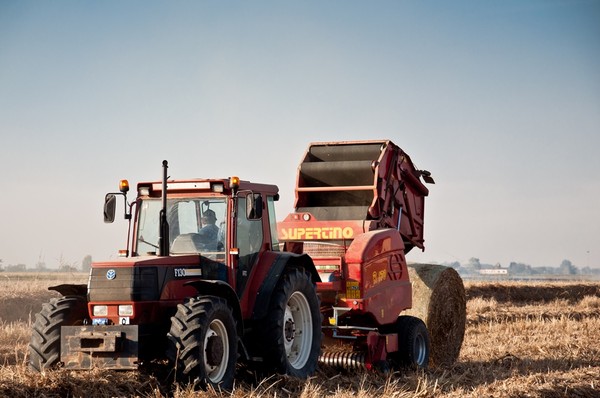
Revision and training, a strategy for safety
The correct use of agricultural machinery and equipment at the centre of a conference at the Foggia Fair. Safety policy involves manufacturers in designing intrinsically safe machines, and involves users and dealer networks with specific awareness-raising and training initiatives
Raising the awareness of both users of equipment and agricultural machinery for their correct and safe use and the technical operators of local health authorities for targeted inspections based on risk plans; this was the purpose of the conference “The prevention and safeguarding of those who work and produce in agriculture”, organized by Workplace Prevention and Safety Service (Spesal) of the Foggia local health authority, in collaboration with the Puglia Region, Inail, the Interregional Technical Coordination for Prevention in Workplaces (Ctipll), and the National Prevention Worker Society (Snop) during the 68th Agriculture and Livestock Fair in Foggia. “Despite the progress made, agriculture remains one of the most hazardous sectors by magnitude and frequency of reported injuries - said Carlo De Petris of Inail’s Department of Technological Innovations. In Italy, there are about 200 fatalities and 250-300 serious accidents every year. 60% of accidents are related to the tractors overturning, however walking tractors and motor hoes also show a very high rate of injuries. Fatal accidents and more or less serious injuries increase with the ageing of farmers, especially those over 65, and largely occur at the end of the week, involving more hobbyists than professional farmers.
The severity of the problem requires special attention and full involvement of the government agencies and institutions involved in developing protective and preventive measures to safeguard the health and safety of agricultural workers.”
The culture of safety is one of the indicators of the evolution of a civil society, said Mario Fargnoli of Mipaaf. “This important objective must be achieved through three distinct yet closely linked actions: an adequate regulatory framework, i.e. a system of laws and regulations designed to ensure the best safety conditions in the living and working environments; a growth of awareness, that is, the habit of considering security an essential aspect of the daily life of businesses and people; finally, primary prevention regarding the environment (improvement of working conditions and equipment) and regarding man (worker education) as a key tool to contain accidents, injuries and illnesses.”
Agricultural safety is the priority for every player in the agricultural mechanization chain, firstly for the manufacturers “whose role - said Domenico Papaleo of FederUnacoma’s Technical Service” - is to design safe machines because, as stated in the 2006/42/EC Directive, “the social cost due to the high number of injuries can be reduced by integrating safety in the design.” The Machinery Directive adds that, “if there are still risks, in spite of the protection measures incorporated in the design, the protections and additional protection measures, further additional measures are required, including warning devices.” The manufacturer’s role therefore combines training and information, to “train” the operator on the correct use of machines and increase his perception of risk.”
On new machines, safety requirements must be applied taking into account of the state of the art when the machine is being built. “Regarding the working machinery fleet,” adds Papaleo, “the importance of the Inail Guidelines and the revision should be highlighted as tools to ensure the maintenance and compliance of an acceptable safety standard, and in this regard the most useful tool is the fatal accident database, that is, a database that will have to describe in a detailed and unambiguous manner the injury events in order to identify their causes, in order to make corrective changes on the machine. Finally, it is of the utmost importance for manufacturers that the provisions of the Machinery Directive are respected by all players on the market: therefore, we aim for a uniform market monitoring throughout Europe.”
If the role of manufacturers in ensuring machine safety is fundamental, equally important is that of dealers and repairers, said Rodolfo Catarzi of Unacma.
“We must admit that the issue of agricultural machinery safety has not always been at the centre of attention of dealers and repairers of agricultural and gardening machines. The success and value of the dealer have always been commensurate with his ability to illustrate and convince the buyer of the exclusive technical features of the product offered, its greater productivity and the excellent quality to price ratio.
However, only rarely have safety aspects been a subject of interest, much less commercial opportunities. Indeed, the presence of safety devices, such as the protection arc on tractors or the engine stop on walking tractors has sometimes been considered by the buyer as more of a hindrance than a benefit.
Therefore, Unacma has identified specific training actions and courses for dealers and repairers of agricultural and gardening machinery on the subject of safety as a basic topic for their professional growth.”








